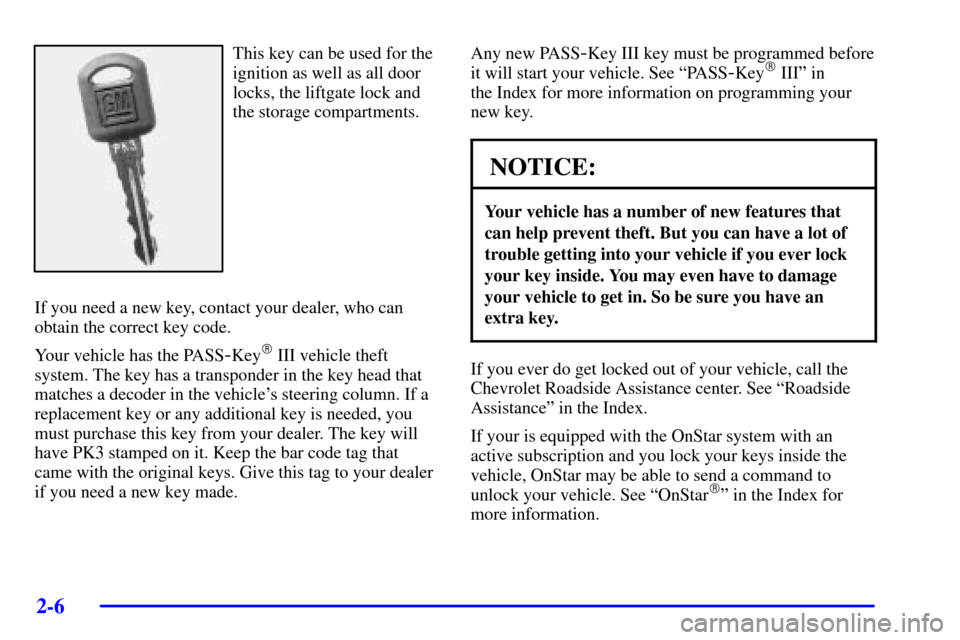Page 55 of 486
1-49
The right front passenger's side impact air bag is in the
side of the passenger's seatback closest to the door.
CAUTION:
If something is between an occupant and an air
bag, the bag might not inflate properly or it
might force the object into that person causing
severe injury or even death. The path of an
inflating air bag must be kept clear. Don't put
anything between an occupant and an air bag,
and don't attach or put anything on the steering
wheel hub or on or near any other air bag
covering. Don't let seat covers block the inflation
path of a side impact air bag.
Page 61 of 486
1-55
Rear Seat Outside Passenger Positions
Lap-Shoulder Belt
The positions next to the windows have lap
-shoulder
belts. Here's how to wear one properly.
1. Pick up the latch plate and pull the belt across you.
Don't let it get twisted.
The shoulder belt may lock if you pull the belt across
you very quickly. If this happens, let the belt go back
slightly to unlock it. Then pull the belt across you
more slowly.
Page 62 of 486
1-56
2. Push the latch plate into the buckle until it clicks.
In the third row, if the belt stops before it reaches the
buckle, tilt the latch plate and keep pulling until you
can buckle it.
Third Row Outside Passenger Position
Pull up on the latch plate to make sure it is secure.When the shoulder belt is pulled out all the way, it
will lock. If it does, let it go back all the way and
start again. If the belt is not long enough, see ªSafety
Belt Extenderº at the end of this section. Make sure
the release button on the buckle is positioned so you
would be able to unbuckle the safety belt quickly if
you ever had to.
3. To make the lap part tight, pull down on the buckle
end of the belt as you pull up on the shoulder part.
Page 63 of 486
1-57
The lap part of the belt should be worn low and snug on
the hips, just touching the thighs. In a crash, this applies
force to the strong pelvic bones. And you'd be less likely
to slide under the lap belt. If you slid under it, the belt
would apply force at your abdomen. This could cause
serious or even fatal injuries. The shoulder belt should go
over the shoulder and across the chest. These parts of the
body are best able to take belt restraining forces.
The safety belt locks if there's a sudden stop or a crash,
or if you pull the belt very quickly out of the retractor.
CAUTION:
You can be seriously hurt if your shoulder belt is
too loose. In a crash, you would move forward
too much, which could increase injury. The
shoulder belt should fit against your body.
To unlatch the belt, just push the button on the buckle.
Page 96 of 486
1-90
4. Pull the rest of the shoulder belt all the way out of
the retractor to set the lock.5. To tighten the belt, feed the shoulder belt back into the
retractor while you push down on the child restraint. If
you're using a forward
-facing child restraint, you may
find it helpful to use your knee to push down on the
child restraint as you tighten the belt.
6. Push and pull the child restraint in different
directions to be sure it is secure.
To remove the child restraint, just unbuckle the vehicle's
safety belt and let it go back all the way. The safety belt
will move freely again and be ready to work for an adult
or larger child passenger.
Page 103 of 486
1-97
5. Pull the rest of the shoulder belt all the way out of
the retractor to set the lock.6. To tighten the belt, feed the shoulder belt back into the
retractor while you push down on the child restraint.
You may find it helpful to use your knee to push down
on the child restraint as you tighten the belt.
7. Push and pull the child restraint in different
directions to be sure it is secure.
To remove the child restraint, just unbuckle the vehicle's
safety belt and let it go back all the way. The safety belt
will move freely again and be ready to work for an adult
or larger child passenger.
Page 109 of 486

2-
2-1
Section 2 Features and Controls
Here you can learn about the many standard and optional features on your vehicle, and information on starting,
shifting and braking. Also explained are the instrument panel and the warning systems that tell you if everything is
working properly
-- and what to do if you have a problem.
2
-2 Windows
2
-5 Keys
2-7 Door Locks
2-10 Remote Keyless Entry System (Option)
2-17 Multifunction Alarm Locks and
Lighting Choices
2
-27 Dual Sliding Doors
2
-29 Power Sliding Door (Option)
2
-36 Liftgate
2
-37 Theft
2
-38 Content Theft-Deterrent (Option)
2
-40 PASS-Key� III
2
-43 New Vehicle ªBreak-Inº
2-43 Ignition Positions
2
-45 Starting Your Engine
2
-46 Engine Coolant Heater (If Equipped)
2
-47 Automatic Transaxle Operation
2
-52 Parking Brake
2
-53 Shifting Into PARK (P)2
-56 Shifting Out of PARK (P)
2
-57 Parking Over Things That Burn
2
-57 Engine Exhaust
2
-58 Running Your Engine While You're Parked
2
-59 Turn Signal/Multifunction Lever
2
-67 Exterior Lamps
2-68 Interior Lamps
2-74 Storage Compartments
2-87 Accessory Inflator System (Option)
2
-89 Accessory Power Outlets
2
-90 OnStar� System (If Equipped)
2
-94 HomeLink� Transmitter (Option)
2
-98 The Instrument Panel -- Your
Information System
2
-102 Warning Lights, Gages, Messages
and Indicators
2
-112 Message Center
2-120 Driver Information Center (DIC) (Option)
2-123 Rear Parking Assist (Option)
Page 114 of 486

2-6
This key can be used for the
ignition as well as all door
locks, the liftgate lock and
the storage compartments.
If you need a new key, contact your dealer, who can
obtain the correct key code.
Your vehicle has the PASS
-Key� III vehicle theft
system. The key has a transponder in the key head that
matches a decoder in the vehicle's steering column. If a
replacement key or any additional key is needed, you
must purchase this key from your dealer. The key will
have PK3 stamped on it. Keep the bar code tag that
came with the original keys. Give this tag to your dealer
if you need a new key made.Any new PASS
-Key III key must be programmed before
it will start your vehicle. See ªPASS
-Key� IIIº in
the Index for more information on programming your
new key.
NOTICE:
Your vehicle has a number of new features that
can help prevent theft. But you can have a lot of
trouble getting into your vehicle if you ever lock
your key inside. You may even have to damage
your vehicle to get in. So be sure you have an
extra key.
If you ever do get locked out of your vehicle, call the
Chevrolet Roadside Assistance center. See ªRoadside
Assistanceº in the Index.
If your is equipped with the OnStar system with an
active subscription and you lock your keys inside the
vehicle, OnStar may be able to send a command to
unlock your vehicle. See ªOnStar
�º in the Index for
more information.